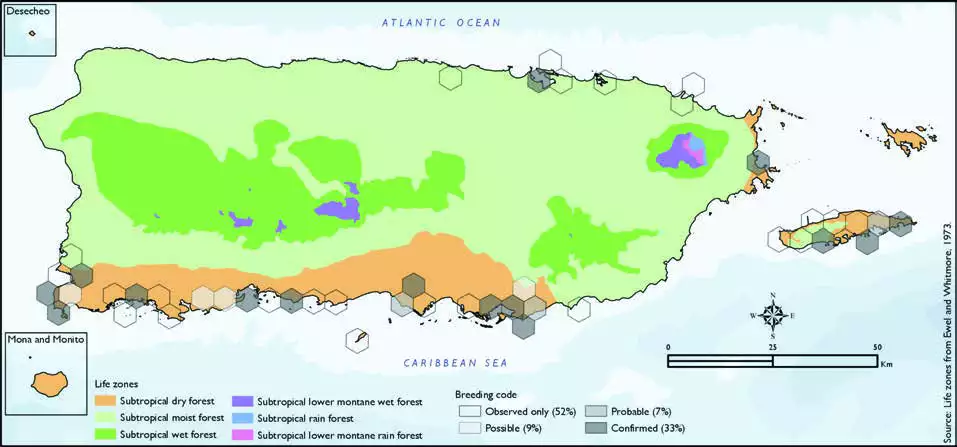Least Tern
Description
The least tern (Sternula antillarum) is a species of tern that breeds in North America and locally in northern South America. It is closely related to, and was formerly often considered conspecific with, the little tern of the Old World. Other close relatives include the yellow-billed tern and Peruvian tern, both from South America.
Distribution & Habitat
The Least Tern is widespread and local in North America
(Raffaele and others 1998),
and winters off Central and
South America (Oberle 2018).
In the West Indies, it is a
common breeding resident in
The Bahamas, Greater Antilles,
Cayman Islands, St. Martin, Antigua, and Barbuda mostly
from May to August (Raffaele
and others 1998). However, it
is an uncommon breeder in the
Virgin Islands and some of the
other northern Lesser Antilles
south to St. Christopher, while it
ranges from uncommon to rare
among the more southern Lesser
Antilles (Raffaele and others
1998). It is described as fairly
common in the coastal areas
of Puerto Rico, especially on
the southwestern region where
colonies of this species nest
near the Cabo Rojo lighthouse
(Biaggi 1997). On Vieques, it is
a fairly common breeding visitor
in summer, rare in fall, extremely
rare in winter, and uncommon in spring (Gemmill 2015). It
usually inhabits shallow coastal
waters (Oberle 2018), harbors,
and lagoons (Raffaele and
others 1998), and more recently
has been nesting on the roofs
of shopping centers. The atlas
fieldwork yielded a total of 82
records within 46 hexagons or 10
percent of the 479 total hexagons
(see map). Of the 46 hexagons
where this species was found,
breeding met the atlas definition
of confirmed in 33 percent (15)
of the hexagons, probable in 7
percent (3), and possible in 9
percent (4), while the species
was observed in 52 percent (24)
of the hexagons but without
evidence of breeding (see map).Least Tern distribution. The map shows the highest breeding code by hexagon and overlaying the ecological life zones in
Puerto Rico. Note: percentages may not total 100 due to rounding. 121Least Tern/Charrancito

Breeding Habits
Previously published reports indicate that the Least Tern
breeds from April to July
(Raffaele and others 1998). The
nest consists of a scrape that can
be located in a wide variety of
habitats ranging from industrial
sites (Raffaele and others 1998)
and gravel-roofed buildings to
undisturbed beaches (Oberle
2018), and Least Terns either
nest as single pairs or in colonies
(Raffaele and others 1998). Atlas
results show that this species
breeds from April to August
with the most breeding activity
from May to July (see chart).
Overall, the breeding activity
peaks during May and June, and it mostly takes place within the
subtropical dry forest life zone
(see chart). Atlas results show
that this species breeds mostly in
southern coastal areas within the
subtropical dry forest life zone
(91 percent of the hexagons) and
less commonly in the subtropical
moist forest life zone (9 percent
of the hexagons) (see table
and map).
Conservation
The current overall population trend of the Least Tern is
described as decreasing,
although some populations
are increasing and others have
unknown trends (Delany and
Scott 2006). The Least Tern is currently listed as a species
of least concern by the IUCN
(BirdLife International 2018),
and locally it is not listed in any
of the threatened categories
of PRDNER and USFWS. As
a ground nester, the nests
are subject to nest predation
by mongooses (Herpestes
auropunctatus), cats (Felis spp.),
dogs (Canis spp.), and humans,
which may cause breeding birds
to abandon nests. In Puerto Rico,
the Least Tern has a protected
habitat in land of 18 percent or
94 km2 of the total area covered by the hexagons where evidence
of breeding was found for this
species (527 km2).
Related Species
Family:
gull